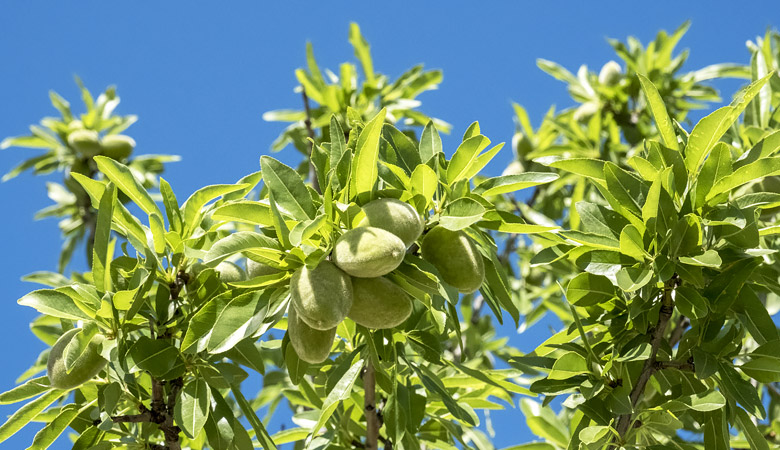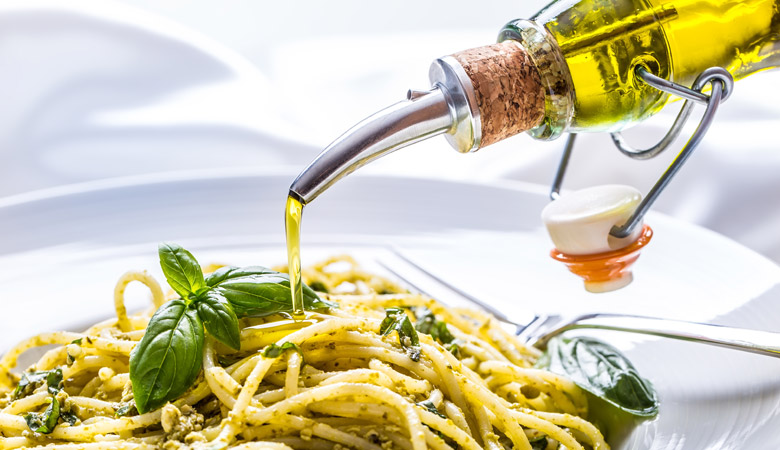Olive oil by country: an acid test
- By Simpson Travel
- 05 Jul 2018
- Views and reviews
Olive oil has been a staple ingredient in most UK kitchens since the 1990s, with supermarkets offering entire aisles of oils from around the Mediterranean. We're all aware of its health benefits, including the virtues of Extra Virgin Olive Oil (EVOO) over standard, and you might even know that top quality oil has an acidity of 0.8% or lower, but could you spot the difference between Spanish, Italian, Greek or Turkish varieties?
Spain
Spain is the largest producer of olive oil in the world, with more than 5,000,000 acres of land given over to olive growing, though only around 20% of their produce is classified as Extra Virgin. Spain also exports significant quantities of olive oil, and interestingly, quite a bit of it is sold to Italy!
Tasting notes: Spanish olive oil tends to be golden rather than green. It has a light, fruity flavour which is an ideal match for the other core ingredients of Spanish cooking such as paprika, garlic and lemon. Expert tasters will often tell you that Spanish oil has floral notes too.
Italy
The Italians are the second biggest producers of olive oil, with an annual output of around 700,000 tonnes. However, such is the demand for oil in Italy (and Italian oil internationally) that the producers have become adept at creating blends, much in the same way as whisky makers, as Italians consume more oil than they can produce. Oil is imported from countries like Spain, Turkey and Greece, blended with a certain amount of local oil and then resold on either the domestic or international market to meet the demand. As our Northern Italy Product Director Jonathan Magoni explains, "There's an enormous difference between extra virgin olive oil from a small local producer and the blended oils that you get on the shelves of the supermarkets that more often than not are blends of different 'Mediterranean basin' oils. I always advise people to buy direct from the producer or a local shop if possible".
Tasting notes: Italian olive oil is darker and greener than Spanish oil, although Sicilian-produced oil is often paler. Good Italian oil is full bodied and intensely flavoured, and professional tasters will usually refer to the flavour as grassy or herbal.

Greece
Olive oil is more culturally synonymous with Greece than perhaps with any other country, and figures indicate that the Greeks consume more oil per head than any other nation. Economically it’s important too; the country produces some 400,000 tonnes of ‘liquid gold’ per year, and the classic Greek landscapes dotted with ancient olive groves are arguably as emblematic of the country as the Parthenon. The Greeks are keen to extol the health benefits of their oil too: Greek olive oil is said to contain more polyphenols (antioxidants) than other extra virgin oils, and these are said to be able to reduce the risk of developing a number conditions including coronary artery disease and some forms of cancer.
Tasting notes: Olive oil from Greece tends to be darker still and more earthy in flavour than Italian oil, with an intensity that some attribute to the more extreme climate. The flavour is certainly robust and deeply savoury, and a natural partner for the pungent herbs that dominate Greek cooking.
Turkey
Turkey shares the long Mediterranean tradition of growing and using olives, and by most reports it is the 4th largest producer of olive oil, with an estimated three olive trees cultivated per head of population! It exports more oil than it consumes, much of which goes to Italy for blending, and some of which is now being sold to the burgeoning Asian market. Turkish oil does not tend to have the culinary kudos that is often attributed to Italian or Greek varieties, though the region around Ayvalik, in the north eastern Aegean, has made a name for itself for top quality oils.
Tasting notes: Turkish oil doesn’t tend to have the slight bitterness that Italian oils have, and while purists might suggest this indicates inferior quality, others simply prefer the milder taste.
So while there is certainly variation between oil producing countries, it’s hard to rate one over another, and it all comes down to personal taste in the end. If you are interested in the evolution of oil production, we highly recommend a visit to the Parga Olive Oil museum, located about 40 minutes from Sivota. It’s a relatively new and very hands-on venture, set in an old olive oil factory in the heart of one of the best oil producing areas of Greece. Want to know more? See our quick list of olive oil facts below or read our own Jonathan Magoni's experience of local-scale production of olive oil in Tuscany.

Did you know?
- Extra Virgin olive oil is best kept for dressing or adding as a flavour rather than frying. It has a low burning point, which means the nutritional benefits are quickly lost if it gets too hot.
- Unlike wine, olive oil doesn’t improve with age. Dark containers will help prolong the shelf life, but the best advice it to use generously and don’t save it for best!
- You’ll get what you pay for. Hand picking and cold pressing are much less efficient than more mechanised production, which makes for a more expensive oil.
- Colour is unimportant to the flavour, which is why oil is served in blue glasses at expert tastings and competitions so the judges aren’t swayed by the tone of the contents.








